I R O N | b6 b9 & b12
Iron is an essential mineral used to transport oxygen to all parts of the body. A slight deficiency in iron causes anemia (fatigue/weakness), and a chronic deficiency can lead to organ failure. Conversely, too much iron leads to production of harmful free radicals, and interferes with metabolism, causing damage to organs like the heart and liver. The body is able to regulate uptake of iron, so overdose is rare and usually only occurs when people take supplements. Iron from natural food sources, like the ones listed below, are considered safe and healthy. While iron is better absorbed from heme (meat) sources, non-heme (plant) iron is better regulated causing less damage to the body.
High iron foods include, liver, sunflower seeds, nuts, beans, whole grains, spinach, dark chocolate, and tofu. The current daily value (DV) for iron is 18 milligrams (mg).
For more high iron foods see the lists of high iron foods by nutrient density, iron rich foods (heme and non-heme), and the list of fruits and vegetables high in iron.
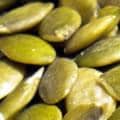
Squash and Pumpkin Seeds
Other Seeds High in Iron 28g Sesame (23%), Sunflower (11%), and Flax (9%). Click to see complete nutrition facts.
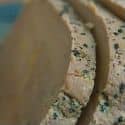
#2: Liver (Chicken)
1 tablespoon of chicken liver pate provides 7% DV. One ounce of liverwurst sausage provides 10% DV. Click to see complete nutrition facts.

Spinach
Other Greens High in Iron (%DV per cup): Cooked Swiss Chard (22%), Cooked Turnip Greens (16%), Raw Kale (6%), and Raw Beet Greens (5%). Click to see complete nutrition facts.

White Beans
Other Beans High in Iron (%DV per cup cooked): Soybeans (49%), Lentils (37%), Kidney beans (29%), Garbanzo beans (Chickpeas) (26%), and Lima beans (25%), Navy (24%), Black Beans (Frijoles Negros) (20%), Pinto (20%), and Black-eyed Peas (20%). Click to see complete nutrition facts.
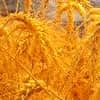
#7: Whole Grains, Fortified Cereals, and Bran
Other Grains High in Iron (%DV per cup cooked): Oatmeal (12%), Barley (12%), Rice (11%), Bulgur (10%), Buckwheat (7%), and Millet (6%). Fortified cereals provide up to 140% DV of iron per cup. Check nutrition facts, and also be careful of the high sugar level in commercial cereals. Bran from whole grains can harm absorption of iron supplements, while whole grains are a good source of iron, they should not be consumed with iron supplements. Click to see complete nutrition facts.

#9: Dark Chocolate and Cocoa Powder
1 cup of cocoa powder provides 66% DV. A 1.5oz (44g) candy chocolate bar provides 6% DV. Click to see complete nutrition facts.
“Folate, vitamin B6, and vitamin B12 play key roles in converting homocysteine into methionine, one of the 20 or so building blocks from which the body builds new proteins. Without enough folate, vitamin B6, and vitamin B12, this conversion process becomes inefficient and homocysteine levels increase. In turn, increasing intake of folate, vitamin B6, and vitamin B12 decreases homocysteine levels.” maintaining proper homocysteine levels is crucial to heart health!
Other roles of vitamin B6 include the formation of hemoglobin and neurotransmitters, as well as regulation of blood glucose. The RDA for Vitamin B6 is 1.3 mg/day 2mg.
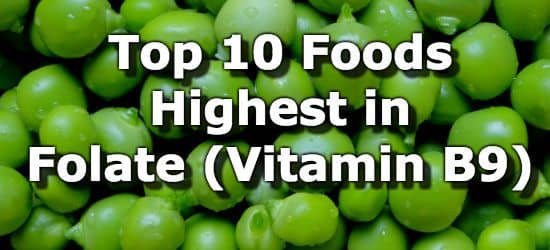
Vitamin B9 (aka: folate, folicin, folic-acid) is a water-soluble B vitamin with many rich natural sources. Folic acid is the synthetic form of vitamin B9 found in fortified foods and supplements. As with most vitamins, the natural form of vitamin B9 (folate) is preferred, and better for absorption. Vitamin B9 (folate) is required for numerous body functions including DNA synthesis and repair, cell division, and cell growth. A deficiency of folate can lead to anemia in adults, and slower development in children. For pregnant women, folate is especially important for proper fetal development. Folate, Vitamin B9, is a water soluble vitamin that is well regulated by the body, thus overdose is rare in natural food sources, and can only occur from supplements.
The current DV for Folate (Vitamin B9) is 400μg. Below is a list high folate foods, click here for high vitamin B9 (folate) foods by nutrient density, here for an extended list of folate rich foods, and here for other vitamin B foods.
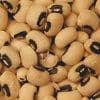
Beans - Cooked
Beans High in Folate (%DV per cup cooked): Mung Beans (80%), Pinto Beans (74%), Chickpeas (71%), Pink Beans (71%), Lima Beans (68%), Black Beans (64%), Navy Beans (64%), and Kidney Beans (58%). Click to see complete nutrition facts.

Spinach
Other Dark Green Leafy Vegetables High in Folate (%DV per cup cooked): Turnip Greens (42%), Pak Choi (Chinese Cabbage)(17%), Savoy Cabbage (17%), and Collard Greens (8%). Click to see complete nutrition facts.
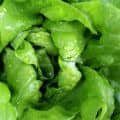
Lettuce Romaine
Other Lettuce High in Folate (%DV per cup shredded): Endive (18%), Butterhead (10%), Salad Cress (10%), Chicory (8%), and Arugula (4%). Click to see complete nutrition facts.
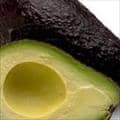
Avocado
Half an avocado contains 161 calories. Click to see complete
World's Healthiest Foods rich in
iron
iron
FoodCalsDRI/DV
High iron foods include, liver, sunflower seeds, nuts, beans, whole grains, spinach, dark chocolate, and tofu. The current daily value (DV) for iron is 18 milligrams (mg).
For more high iron foods see the lists of high iron foods by nutrient density, iron rich foods (heme and non-heme), and the list of fruits and vegetables high in iron.

Squash and Pumpkin Seeds
| Iron in 100g | 1 cup (227g) | 1 ounce (142 seeds) (28g) |
| 15mg (83% DV) | 34mg (188% DV) | 4mg (23% DV) |

#2: Liver (Chicken)
| Iron in 100g | 1 Liver (44g) | 1 ounce (28g) |
| 13mg (72% DV) | 5.7mg (32% DV) | 3.6mg (20% DV) |
Advert
Cholesterol-Fighting Foods
Consuming a diet rich in cholesterol-lowering foods helps promote healthy cholesterol levels. Soluble fiber from foods such as oatmeal, oat bran, kidney beans, apples and pears binds cholesterol in your digestive system, inhibiting its entrance into circulation. Fish provides heart-healthy, omega-3 fatty acids, which lower LDL levels and help protect your heart. Nuts also contain contain heart-healthy fats; eating 2 ounces of nuts such as walnuts or almonds every day can slightly lower LDL.

Spinach
| Iron in 100g | 1 cup of Cooked Spinach (180g) |
| 3.6mg (20% DV) | 6mg (36% DV) |

White Beans
| Iron in 100g | 1 cup cooked (179g) | 1 Tablespoon (11g) |
| 3.7mg (21% DV) | 6.6mg (37% DV) | 0.5mg (2% DV) |

#7: Whole Grains, Fortified Cereals, and Bran
| Iron in 100g of Quinoa | 1 cup of Quinoa (185g) |
| 1.5mg (8% DV) | 2.8mg (15% DV) |

#9: Dark Chocolate and Cocoa Powder
| Iron in 100g | 1 cup grated (132g) | 1 Square (29g) |
| 17mg (97% DV) | 23mg (128% DV) | 5mg (28% DV) |
“Folate, vitamin B6, and vitamin B12 play key roles in converting homocysteine into methionine, one of the 20 or so building blocks from which the body builds new proteins. Without enough folate, vitamin B6, and vitamin B12, this conversion process becomes inefficient and homocysteine levels increase. In turn, increasing intake of folate, vitamin B6, and vitamin B12 decreases homocysteine levels.” maintaining proper homocysteine levels is crucial to heart health!
Other roles of vitamin B6 include the formation of hemoglobin and neurotransmitters, as well as regulation of blood glucose. The RDA for Vitamin B6 is 1.3 mg/day 2mg.
World's Healthiest Foods
World's Healthiest Foods rich in
folate
folate
FoodCalsDRI/DV
World's Healthiest Foods rich in
vitamin B6
vitamin B6
FoodCalsDRI/DV
World's Healthiest Foods rich in
vitamin B3
vitamin B3
FoodCalsDRI/DV
World's Healthiest Foods rich in
vitamin B2
vitamin B2
FoodCalsDRI/DV
World's Healthiest Foods rich in
pantothenic acid
pantothenic acid
FoodCalsDRI/DV
World's Healthiest Foods rich in
calcium
calcium
FoodCalsDRI/DV
World's Healthiest Foods rich in
magnesium
magnesium
FoodCalsDRI/DV
World's Healthiest Foods rich in
vitamin B12
vitamin B12
FoodCalsDRI/DV

Vitamin B9 (aka: folate, folicin, folic-acid) is a water-soluble B vitamin with many rich natural sources. Folic acid is the synthetic form of vitamin B9 found in fortified foods and supplements. As with most vitamins, the natural form of vitamin B9 (folate) is preferred, and better for absorption. Vitamin B9 (folate) is required for numerous body functions including DNA synthesis and repair, cell division, and cell growth. A deficiency of folate can lead to anemia in adults, and slower development in children. For pregnant women, folate is especially important for proper fetal development. Folate, Vitamin B9, is a water soluble vitamin that is well regulated by the body, thus overdose is rare in natural food sources, and can only occur from supplements.
The current DV for Folate (Vitamin B9) is 400μg. Below is a list high folate foods, click here for high vitamin B9 (folate) foods by nutrient density, here for an extended list of folate rich foods, and here for other vitamin B foods.

Beans - Cooked
| Folate in 100g | Per cup (171g) | Per ounce (28g) |
| 208µg (52% DV) | 356µg (89% DV) | 58µg (15% DV) |
Beans High in Folate (%DV per cup cooked): Mung Beans (80%), Pinto Beans (74%), Chickpeas (71%), Pink Beans (71%), Lima Beans (68%), Black Beans (64%), Navy Beans (64%), and Kidney Beans (58%). Click to see complete nutrition facts.

Spinach
| Folate in 100g | Per cup (Raw - 30g) | Per cup (Cooked - 180g) |
| 194µg (49% DV) | 58µg (15% DV) | 263µg (66% DV) |

Lettuce Romaine
| Folate in 100g | Per 3oz Serving (85g) | Per cup (Shredded - 47g) |
| 136µg (34% DV) | 116µg (29% DV) | 64µg (16% DV) |

Avocado
| Folate in 100g | Per cup cubed (150g) | Per avocado (201g) |
| 81µg (20% DV) | 122µg (30% DV) | 163µg (41% DV) |